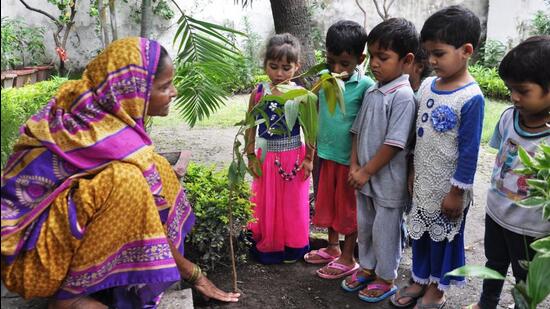Jul 15, 2024 09:02 PM IST
Enhancing decentralised, community-action based State capacity for effective governance of human development and other public good sectors is an agenda for all elected governments as devolution alone leads to an inclusive society and shared growth
State capacity and effective governance have become the latest buzzwords. Across government programmes, there is a need to analyse efforts at building State capacity. In 2018, the Sumit Bose Committee carried out a detailed assessment of the core and agency functions of the rural local governments and made normative recommendations on the professional skills that they must have. Very few states have carried it out, even though the ministry of panchayati raj has been taking it up with successive Finance Commissions. There is a solid case for elected representatives at the basti level in urban areas, too, as wards are too large for direct community action. It can be done without a constitutional amendment. Let us look at a few innovations for improving State capacity and improving governance.

The Sarva Shiksha Abhiyan (SSA) and the National Rural Health Mission (NRHM) were national-level pioneers in providing new skill sets through innovative hiring of professionals at block, district, state, and national levels with 6% management cost budgeted. Hospital managers, health managers, programme managers, pedagogy experts, gender experts, civil works experts, among many others, were brought in on a need- and norm-based basis through these programmes. The state- and the district-level project offices became pioneers of decentralised planning, monitoring, capacity building, and effective governance at the cost of the traditional district education and civil surgeon’s office. While this challenged the inertia of the mainstream, it also corroded the authority of the mainstream both at the district and state levels. Clearly, the institutionalisation of these skill sets through the state public service commission was needed.
Capacity-building support to state projects was available from national institutions like the technical support group of SSA and the National Health System Resource Centre in NRHM. While these led to new processes and practices, the challenge of institutionalising human resource for sustainable, high-quality outcomes must be addressed. To illustrate, “projectised” initiatives led to all children joining the elementary schooling system. Infant mortality rates, maternal mortality rates, and total fertility rates also fell significantly. However, issues of learning quality in schools and the challenges of effective public health capacity have remained. Nutrition clearly requires many more well-trained caregivers. The ASHA worker, the ANM and the aanganwadi worker alone are not enough.
The National Rural Livelihood Mission (NRLM) recognised that it was a human-resource-intensive process and a 6% management cost impetus alone won’t suffice. Units were formed at the cluster and block levels to build the social capital of women’s collectives and generate diversified livelihoods. National resource organisations from civil society sector were roped in with ease of contracting in the states, to provide support. NRLM also created a unique cadre of community resource persons (CRPs), women who have come out of poverty under the Mission. They were imparted skills in community mobilisation, to take over as krishi sakhi, bank sakhi, pashu sakhi, and banking correspondents.
They are not given government salaries. Every village organisation (VO) gets a resource in perpetuity in the form of a community investment fund. These VOs give these CRPs a small token amount. The rest they earn through the service they provide. It is a unique model where local women have built a nationwide force of 100 million women organised in 10 million self-help groups.
Purpose-specific institutions like the National Rural Infrastructure Development Agency (NRRDA) under the Pradhan Mantri Gram Sadak Yojana (PMGSY), which has become the National Rural Infrastructure Development Agency (NRIDA) ever since professional support for Pradhan Mantri Awas Yojana Gramin (PMAY-G) was also assigned to it, are also important. The annual budget of just ₹30 crore is spent on professionals deputed to it, technology for universal GIS mapping of roads, and support to state-level technical partners (mostly IITs and NITs). Rigorous scrutiny of every draft detailed project report, use of innovative technologies like waste plastic and many others, capacity building among state-level engineers and contractors of PMGSY, have been possible because of this autonomous institution. Quality has been ensured in over 600,000 km of PMGSY roads due to this institution.
National Food Security Act (NFSA) is an outstanding example of technology-led reform for outcomes. Giving food grains to 800 million people entitled to this after point of sale (PoS) authentication of identity using Aadhaar is an amazing feat of digital public infrastructure. Even when the Jan Dhan, Aadhaar and Mobile combine was being toasted, I had raised the importance of a database that could provide the fourth leg to this trinity. It came in the form of a community-validated Socio Economic Survey (SECC 2011) that provided details of each deprived household. Its finalisation in July 2015 and adoption thereafter for Ujjwala connections, Saubhagya power connections, PMAY-G, Pradhan Mantri Jan Arogya cover, are an outstanding example of how technology as a means transformed the last mile. Mahatma Gandhi National Rural Employment Guarantee Scheme wages, pension payments and other cash transfers to validated accounts of beneficiaries is nothing short of a revolution in financial access.
Enhancing decentralised, community-action based State capacity for effective governance of human development and other public good sectors is an agenda for all elected governments as devolution alone leads to an inclusive society and shared growth. Human resources for local governments must be India’s priority.
Amarjeet Sinha is a retired civil servant The views expressed are personal
Story Saved


